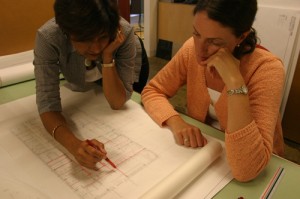Over the past few months, the AIA has spearheaded an effort to bring the design and construction industry together to press lawmakers to address the challenges that are holding our industry back. On Dec. 7, 2011, our coalition sent a letter to President Obama and all members of Congress outlining actions they need to take to create stability in the economy and promote growth in the private sector. (You can read the letter here.) This week, AIA President Clark Manus, FAIA, delivered this message to top White House officials, and AIA National Board members took to Capitol Hill to call on Congress to act.
How can you help? By asking your representatives to support common-sense, bipartisan legislation that will address one of the biggest factors impeding recovery: the lack of financing for worthy design projects.
The AIA is a leading supporter of HR 1356 the Capital Access for Main Street Act of 2011, a bipartisan bill that would help small community banks write off debt over a longer period of time, which would free up capital for lending. This is an approach that worked following an agricultural crisis in the 1980s to help business recover, and it does not cost the taxpayers a dime in funding. This bill passed the House in 2010 with strong support, but did not make it through the Senate before the election.
We have a real chance to get this legislation through Congress, but for that to happen it needs more representatives to learn about it and support it. Therefore, we would like you to ask your House representative to cosponsor HR 1356. The AIA Advocacy Center has a letter for you to send.
Even as we demand Congress and the White House take action to improve the economy, we are not waiting on Washington to act. Last month, the AIA launched its stalled projects campaign. This site is designed to help connect investors with design and construction projects. Already investors with $7 billion in funding have signed up. So please take a look and add your projects to the list.
There is no silver bullet to fixing the problems in the economy. But by marshaling the forces of our entire industry, asking our elected leaders to act on common-sense policies, and connecting investors to projects, together we can help to make a difference and get our profession back to work.
Sincerely,
Paul T. Mendelsohn
Vice-President, AIA Government and Community Relations

